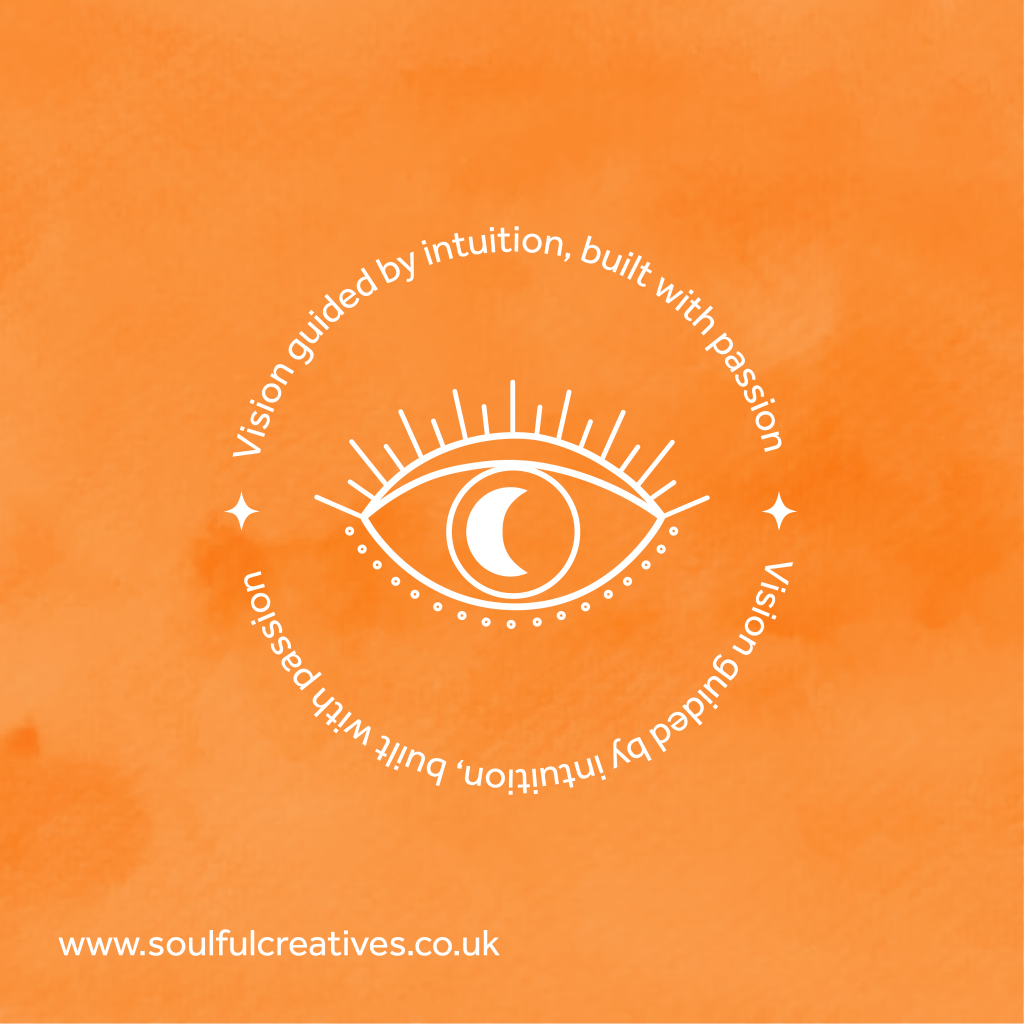
Hello, new friends.
Sustainability: it’s not just a buzzword for your eco-conscious cousin who composts religiously; it’s also a surefire way to future-proof your business. And let’s face it, with the planet serving us daily reminders that it’s had enough (wildfires, floods, and weather that makes you wonder if the apocalypse got a head start), people are starting to pay attention. About time, really.
But let’s be clear—building a sustainable brand isn’t about sprinkling some green glitter on your packaging and hoping nobody looks too closely. That’s how you end up on Twitter, being dragged by someone with a cartoon frog avatar for greenwashing. No, real sustainability is a commitment: messy, complicated, and occasionally a bit of a pain in the arse. Done properly, though, it won’t just make the world a better place; it’ll earn you the kind of customer loyalty that most brands dream of.
At Soulful Creatives, we’re here to help you weave sustainability into the very fabric of your brand identity (and yes, we’ll make it look fabulous). Think of us as your eco-design co-conspirators. We’ll help you stand out in a crowded market, avoid the usual clichés, and maybe even make saving the planet a little less… beige.
Why Sustainability Matters in Branding
Consumer Expectations
People aren’t just paying attention to sustainability; they’re demanding it. And when people demand things, businesses better listen. Here are the cold, hard stats to back it up:
- 80% of people are willing to pay more for sustainable products. That’s right, people will pay extra for a guilt-free shopping experience. It’s the closest thing to sainthood most of us will achieve.
- 70% prefer to buy from brands committed to sustainability. The other 30%? Probably still using plastic straws and wondering why their kids give them side-eye.
- 28% have stopped buying from brands with poor sustainability values. That’s a polite way of saying they’ve ghosted you.
Younger generations, especially, are laser-focused on this. If you want Gen Z to even glance in your direction, you’d better walk the talk—and maybe throw in a TikTok campaign while you’re at it.
Competitive Edge
Sustainability isn’t just about being a good global citizen; it’s also a killer way to stand out. In a world where every brand claims to be “revolutionary,” being genuinely sustainable is a breath of fresh air. It’s not just about selling a product, it’s about sharing a vision for a better future that people want to be part of.
Long-Term Value
Prioritizing sustainability builds trust, loyalty, and a customer base that actually likes you. And let’s be honest, in the cutthroat world of business, being liked is a rare commodity.
Core Principles of a Sustainable Branding Strategy
Authenticity
Sustainability needs to align with your brand’s mission. People can smell inauthenticity. If you’re just sticking a leaf on your logo and calling it a day you risk being the butt of a very public joke. However Deliver on your promises and you A. Help save the planet, B. Sleep at night and C. Might gain some very loyal customers.
Transparency
Honesty isn’t just the best policy; it’s your only option. Share your wins, but don’t be afraid to talk about the challenges too. Think of it as a reality TV confession booth: people appreciate the raw, unfiltered truth. Plus, nobody likes a brand that acts like it’s perfect—we all know perfection is a myth.
Consistency
Sustainability isn’t a one-off PR stunt. It’s not about planting a tree and calling it a day. It’s about weaving eco-consciousness into every single thing you do, from sourcing to marketing to how you handle customer complaints (preferably without sending them a novel’s worth of paper).
Steps to Develop a Sustainable Branding Strategy
- Assess Your Current Practices
Take a good, hard look at where you are now. A sustainability audit is daunting but necessary. While we’re the creative brains, tools like carbon footprint calculators or consultants can help you tackle supply chain improvements, energy usage, and packaging choices. - Define Your Sustainability Goals
Set goals that make sense for your business. Focus on where you can make the most impact. Could you reduce waste? Use eco-friendly materials? Stop printing pointless flyers that end up in peoples bins? - Incorporate Sustainability into Your Brand Identity
Here’s our bit:
Eco-Centric Visual Identity
Your brand’s visual elements should reflect your sustainability values. Use earthy tones like greens, blues, and neutrals, paired with natural textures such as leaf patterns, woodgrain, or water ripples. Develop a cohesive palette and style guide that conveys “planet-friendly” without resorting to overused clichés.
Sustainable Packaging Design
Opt for recyclable, biodegradable, or reusable packaging with minimalist designs. Consider kraft paper with bold, eco-friendly inks or QR codes to replace printed manuals. Packaging is often the first physical interaction with your brand—make it a sustainable statement.
Storytelling Through Branding
Craft a compelling narrative that highlights your sustainability journey. Replace generic phrases like “we care about the planet” with specific, action-oriented messaging such as “Every product saves 3 liters of water—your impact starts here.” Use this story across your website, social media, and packaging. Share your journey—the good, the bad, and the “we thought this was a good idea but…” moments.
Interactive Customer Engagement
Create opportunities for your audience to connect with your sustainability efforts. For example, develop campaigns like “Track Your Impact” tools where customers can see the environmental savings from their purchases, or launch social media challenges like #PlasticFreeWeek to encourage eco-friendly behavior. Run challenges or offer incentives for eco-friendly behavior. Discounts for reusable containers? Not new but still very clever.
Green Content Marketing
Position your brand as a thought leader in sustainability by producing content that educates and engages. Focus on blog posts, infographics, or videos that showcase your eco-friendly practices. Topics like “10 Ways to Upcycle Our Packaging” or “How Your Purchase Supports Local Biodiversity” can resonate deeply with your audience.
Transparent Sustainability Pages
Dedicate a section of your website to showcasing your eco-initiatives. Use visually compelling layouts with stats, videos, and progress bars to illustrate your impact. For example, include a live counter showing how much waste you’ve diverted or the number of trees you’ve planted.
Event Branding with a Green Focus
For events or pop-ups, design eco-friendly signage and reusable swag. Consider items like tote bags made from recycled materials or plantable business cards that grow wildflowers. These details not only align with your sustainability values but also leave a lasting impression.
Community Involvement
Partner with local groups or charities. Host events that make a difference—and don’t forget to document it for the ‘Gram/tiktok etc.
- Measure and Adapt
Track your progress. Celebrate wins. Share metrics like reduced carbon emissions or waste saved. And when something doesn’t work? Pivot. Sustainability is a marathon, not a sprint.
Who is doing right?
Vegivores Natural Kitchen’s
Vegivores Natural Kitchen is redefining plant-based dining with a focus on sustainability that goes beyond the plate. They’ve crafted a menu of locally sourced, scratch-made dishes that not only taste great but also align with their eco-conscious ethos. From compostable packaging to supporting local suppliers, they’re doing their part to make sure your meal leaves a smaller environmental footprint. And while their food is good for you, it’s also good for the planet.
In terms of branding, they’ve nailed the earthy, sustainable vibe without overdoing it. Their design uses a soothing palette of greens, browns, and neutrals, with natural textures that feel connected to nature, not forced. The storytelling is authentic, highlighting their commitment to sustainability through clear, actionable messaging. There’s no fluff—just real talk about what they’re doing and why it matters. And with engaging social media and campaigns, they’re making sure their customers are part of the journey. It’s not just about eating; it’s about making an impact.
Bad hand coffee
Bad Hand Coffee is brewing up more than just a good cup of coffee—they’re making sustainability a key ingredient. With solar-powered roasting, compostable packaging, and even electric vehicle deliveries, they’ve found ways to keep their eco-footprint as small as their coffee grounds. It’s all about minimizing waste while maximizing taste.
From a branding perspective, they’ve got it nailed. Their design is as clean and earthy as their practices, no recycled eco-slogans here—just a straightforward approach that tells the story of their commitment to the planet. It’s simple, effective, and a bit cheeky, like a well-poured espresso.
Lush
Lush has become a go-to brand for ethical, handmade cosmetics, with a strong commitment to cruelty-free products and sustainability. They use fresh, natural ingredients and offer a range of vegan and vegetarian options, all while pushing the envelope on environmental impact. From eco-friendly packaging to their stance against animal testing, Lush proves that beauty can be both effective and responsible.
Their branding is bold, vibrant, and unapologetically transparent, using earthy tones and playful designs to communicate their sustainability ethos. Their marketing is a mix of activism and beauty, making it clear that every product is part of a larger movement. The messaging is direct, and their use of quirky, eye-catching visuals on packaging and in-store displays perfectly reflects their fun, rebellious spirit. It’s not just about selling cosmetics—it’s about starting a revolution in how we think about beauty.
Conclusion
Sustainable branding isn’t just about looking good—it’s about doing good. Align your brand with eco-conscious practices, and you’ll build trust, loyalty, and a brighter future for everyone involved. If you’re ready to start, let’s chat. And if you’re already on the journey, we’d love to hear your war stories—the good, the bad, and the “we accidentally ordered 10,000 bamboo straws” moments. Let’s make sustainability something worth smiling about.


